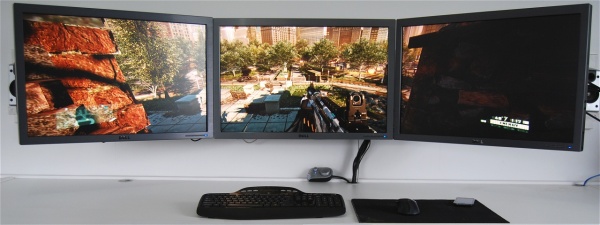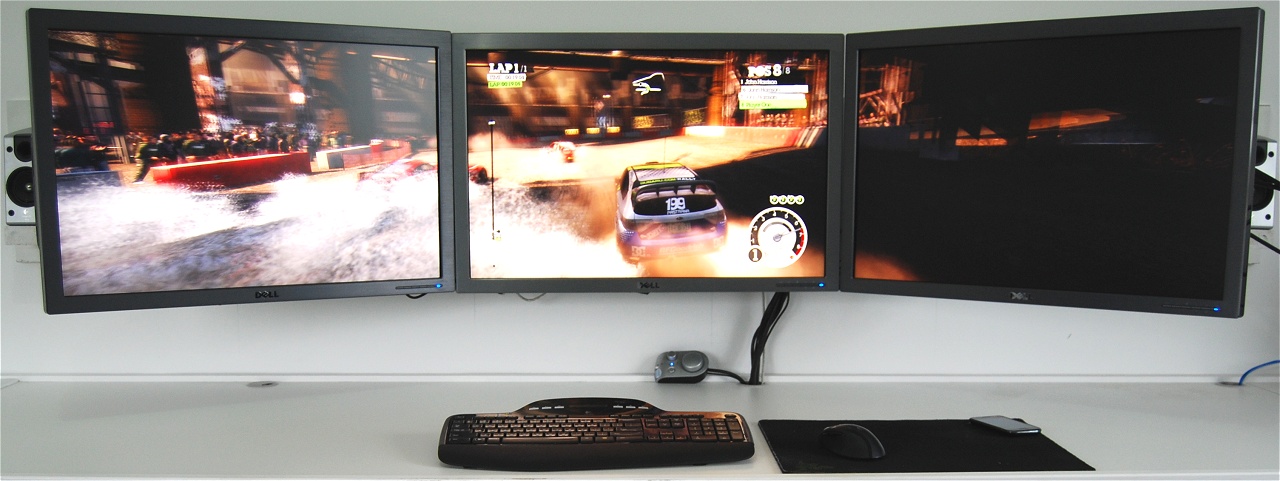SLI vs. Crossfire vs. Single High-end GPU
Rectification (March 13, 2013): Much of the conclusion of this article is based on our standard benchmark tests which look at minimum and average frame rates on several popular games. For the most part, those tests remain valid, but recently we've discovered latency issues, particularly on multi-GPU configurations, posing the question if average frame rates are truly representing actual performance.
The short answer to that is no.
More specifically, Crossfire is showing severe output lag which cripples actual visual output and thus real performance. SLI also suffers, but considerably less in comparison. For more information on how we are testing moving forward, please read this. Also, in the meantime, for updated benchmarks you can check out our review of the GeForce Titan which also looks at Crossfire and SLI configs.
We typically avoid recommending multi-GPU setups with mainstream cards because we'd rather buy a higher-end single-GPU solution and avoid the pitfalls associated with SLI and Crossfire. Many games ship with poor dual-GPU support and require special attention from AMD and Nvidia, and with lower-end multi-GPU setups, performance can be pretty lousy when only one graphics card is being tapped.
Naturally, when everything works, using two mid-range GPUs instead of one high-end GPU can be great. During testing, our GTX 660 Ti SLI setup was on average 26% faster than the GTX 680 and up to 43% quicker in some situations. Granted, there were three titles where the SLI cards offered less than 10% more performance, so it pays to know how your favorite games scale before spending 23% more.

There were several cases where the GTX 680 struggled to deliver playable performance at 5760x1080, while the GTX 660 Tis had no problem at all, and this is probably the most important factor for gamers who want to play demanding titles on extreme multi-monitor resolutions. Still, at $580, a pair of GTX 660 Tis aren't exactly in the mainstream territory, so we also tested a couple of Radeon HD 7850s.
At $360 or so, two HD 7850s make for an interesting comparison against the HD 7970. On average, the Crossfire cards were 6% faster than AMD's single-GPU flagship, and while that may not seem impressive, keep in mind that the HD 7850s cost 10% less than the HD 7970 – a compelling argument if you're not afraid to deal with the occasional hassles that come with running multiple graphics cards in tandem.

Additionally, the dual HD 7850s were only 8% slower than the dual GTX 660 Tis despite being 38% cheaper, and they delivered 15% more performance than the GTX 680 while costing 23% less, making the $360 Crossfire configuration a clear winner in terms of value if that's your primary concern. Now, the final question remains: is it worth splurging on the 4GB HD 7850s? The short answer is, not really.
On average, they were just 7% faster than the standard 2GB models, and that gain isn't entirely explained by the extra memory, as the HIS 7850 iPower IceQ Turbo is clocked 16% faster – something you could possibly achieve on your own. Running Sleeping Dogs at 5760x1080 was the only noteworthy instance where the 4GB cards excelled, but the pricier cards couldn't produce playable performance anyway, making the point moot.
We recently tested a 4GB GTX 680 and found similar results. The only time the extra RAM provided any kind of real performance gain was when the GPU load was so great that playable frame rates simply weren't possible. Again, paying a premium should net some tangible benefit, but if that benefit only kicks in during the worst-case scenario and you're still left with a slideshow, it seems like a waste of cash.
With that said, it's easy to make a case for many non-reference cards. The Gainward GTX 660 Ti Phantom is only slightly more expensive than a standard non-overclocked GTX 660 Ti, which isn't bad given it provided an 8% performance boost on average. Plus, we really like the Phantom's design, and the GTX 660 Ti version makes good use of it. The card is cool, quiet and easy to overclock if that's your thing.






